Textile artist Erik Bergrin says that his own spirituality and realisations is what drives his textile based sculptures.
I developed an intellectual curiosity for Buddhist psychology. I would spend weeks and months in other countries exploring, meditating, and studying. It was in Peru I took a weaving class and learnt to weave. My work developed but I couldn’t place it. It wasn’t about beauty or selling clothes, so it wasn’t fashion. It wasn’t for the stage or screen, so it wasn’t a costume, nor was it wearable art because its not exactly wearable and that has a specific look. So, the only place I could see it fitting is Fibre Sculpture.
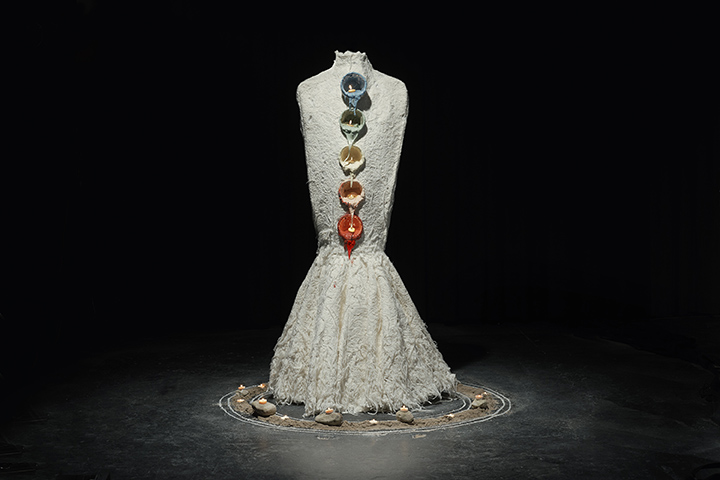
Opening. Textile artist Erik Bergrin. 2016.
How do you describe yourself in the context of challenging perspectives via your work and art?
The goal is never to challenge people’s perspectives. I do think this happens, but it’s a byproduct. But with every project, I definitely challenge my own. In my study of spirituality, the basis is to find exactly what is on your mind you don’t want in there and rip it out. There is a practice to become lucid during the subconscious dream state in sleep, realise you are dreaming, and call out to your shadows. Something will appear in the form of whatever shadow you call out to and you can confront it in its tangible form. The fibre work is my way of bringing out my shadows. Doing this isn’t alway comfortable or fun, a lot like cleaning the house isn’t always comfortable or fun. But the results are so gratifying that you eventually change your perspective of the work itself.
How do you deal with the conceptual difficulty and uncertainty of creating new work?
There was a point last year where I finished my last big project, SHADOWWORK, and didn’t have much more to say after that. So I did not want to do any new big projects. I did keep working and making, but it’s because that’s what I do for fun. When I don’t have anything to say I don’t think I should make people listen.
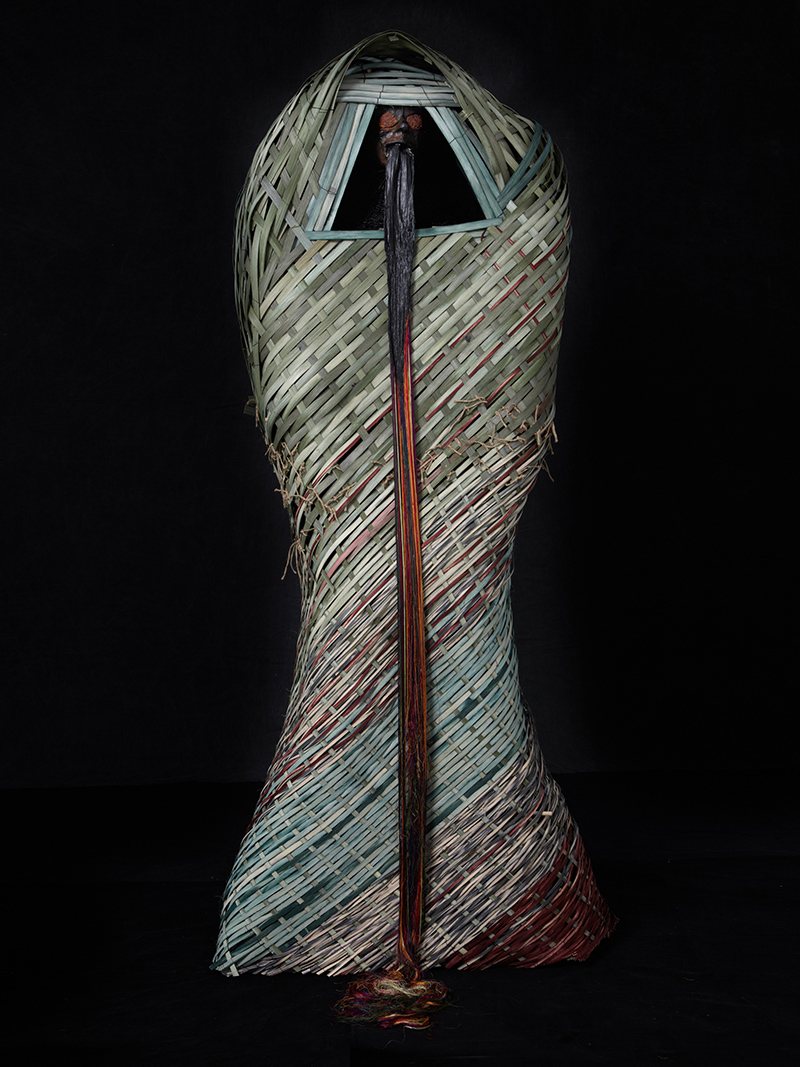
Rainbow Body 2. Textile artist Erik Bergrin. 2017.
Tell us about yourself.
I initially started to make clothes and costumes to wear to nightclubs. I taught myself to sew and kept at it until I was able to put a portfolio of work together. I showed it to a costume studio my friend was working in and he gave me a job making things like team mascots and foam puppets. I learned a lot from there and after about eight months got a job at another shop, then another until I landed in a studio that made really beautifully tailored costumes for Broadway and opera.
I learned a ton from them, and all throughout always kept making my own work. My own stuff was clothing-based and a bit wild. In a shop full of masters degree holders and me being self-taught, I learnt a lot and I was always determined to do a good job, mostly driven by the crippling thought of feeling terrible at the end of the day because I didn’t do it well. From there my personal work was getting better. I lent out things I made all the time for fashion editorials and started to get costume commissions. During this time, I travelled as much as I could. I also developed an extreme intellectual curiosity for Buddhist psychology. I would spend weeks and months in other countries exploring, meditating, and studying. It was in Peru I took a weaving class and learned to weave. It was strange because my work developed but I couldn’t place it. It wasn’t about beauty or selling clothes, so it wasn’t fashion. It wasn’t for the stage or screen, so it wasn’t a costume, nor was it wearable art because that has a specific look. So, fibre sculptures were the perfect fit.

Rainbow Body 3. Textile artist Erik Bergrin. 2018.
Tell us about your career, the lessons you learnt and the hurdles you faced?
While working in costume shops I wasn’t good enough to be in, I felt a bit insecure in my technique, meaning, I always questioned my skill level. I still feel it all the time. It’s just not as strong and I have learnt to work with it. In fact, I see its value now because it helps me do cleaner work. I always concentrate on doing a perfect job. As of now, I am working on an eight piece series of more wearable pieces. I work part time as a tailor for film and television and as a costume designer for theatre, but I try to balance work life and art life.
Tell us about your commitment to your current medium.
Fibre has always been what I was interested in. I am obsessed with textile development and what you can do to create new forms of it. There is a lot to explore and it’s always changing, so it’s endless and I think I will always be working in this field, although I am open to change.

Creme. Textile artist Erik Bergrin. 2016.
What are your frameworks of references?
I do a lot of research with the way different cultures dress, developments in textile, cultural traditions, artists doing amazing things, and other such subjects all the time. I have an Instagram handle based on this. I do this research for fun and love to share things I become obsessed with. But all of that is ingrained in me, and my work is mostly about the mind.
Teaching these wonderful things that have been taught to me and things I have learned along the way is rewarding. Every few years I go on these intense meditation retreats and through this self-development I am able to gain a lot of insight into myself that I like to share. A few years ago I went through a meditation teacher training programme, which allows me to officially do this. This is my main source of inspiration: taking these things I have learned about myself and translating them visually.

Begin. Textile artist Erik Bergrin. 2017.
What shows or performances have shaped your work?
I love looking at costumes from films. I have a list of favourites. Probably, right now it would be Paolo Pasolini’s Medea, starring Maria Callas. It’s sort of overwhelming for me to watch because the costumes are so magnificent. I love everything Eiko Ishioka designed too. She did Bram Stoker’s Dracula and The Fall. I probably wouldn’t be doing what I am doing if it wasn’t for a short documentary on the costumes from the original Planet of the Apes film. It taught me that I could do this for real.
There is a bunch of fine artists I look up to as well. Music plays a role too. Right now I am obsessed with this Scandanavian band Heilung. But this is just fuel for me to produce my own work. I love looking at references because I will have that in the back of my head. However, too many references are likely to sway me into making decisions that aren’t genuine

Cocoon. Textile artist Erik Bergrin. 2018.
How do you resolve the commercial versus creative conflict?
I personally like doing commercial things because it feeds my other stuff. Even if it’s not pleasant to do, it lights a fire in me when I start back on my own thing. It forces me to work with others and do things inside a box I wouldn’t normally, so it is great for mental growth. My work is specific and symbolic, so in my last show the curator wanted me to design the space exactly the way I saw it, which was so nice.
What is the best piece of advice you have received?
I love it that this is possible and have been working to live up to this. Understanding this takes a lot of skill; because things will come up that you don’t want, like anger, jealousy and so forth. The way to work on them is not to suppress them, but to let them ride out.
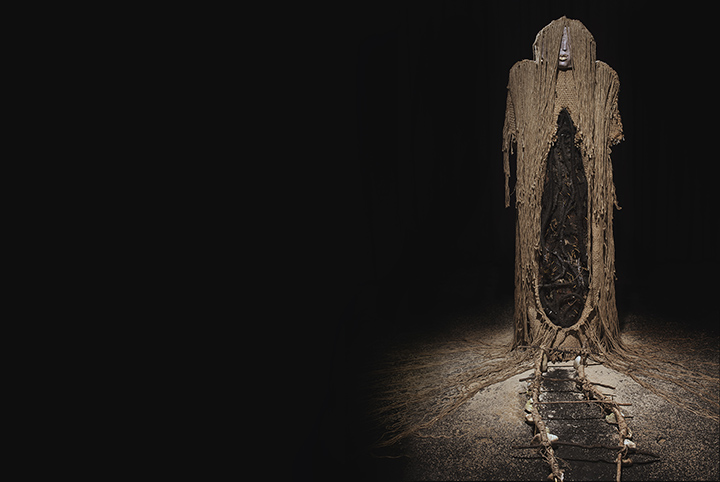
Juanita. Textile artist Erik Bergrin. 2017.
Tell us about your studio.
I have a basement space and it has all my looms, my cutting table, sewing area, and work space. My work day in the studio usually starts with coffee, incense, and music. Then I start wherever I left off the day before. If I start a project I always try and work early, but at some point I end up working really late, finishing around midnight.
Are you more of a studio artist or naturally collaborative by nature.
I definitely love commissions because it allows me to be me while doing something I wouldn’t ordinarily do. As far as collaboration in art is concerned, I would if there was a show or a reason, but its not my nature.
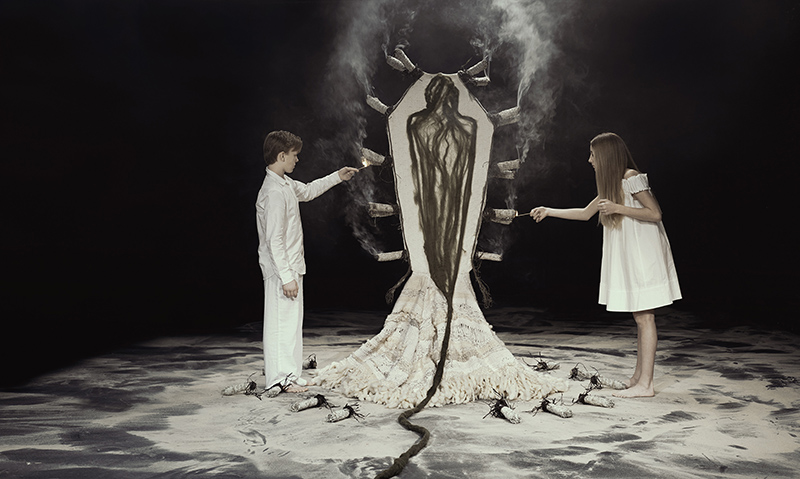
Cleansing. Textile artist Erik Bergrin. 2016.
What are you working on now?
I just started an eight piece series of more wearable things based on the eight dissolutions. In the death process according to Buddhist psychology, you go through these during the time of death. The first five are associated with each one of the senses shutting down and also an element. In the first dissolution the earth element starts to go, so the body gets heavier and you can’t move, and also your sight. This gives rise to the second, which is water and hearing. So the liquids in your body start to dry up and your hearing ceases. Each one of my pieces is a representation of these, and gets esoteric with colours and symbols, which I am really excited about. I plan to show this at the end, but also want to have a show with actual people in it.
Before you go – you might like to browse our Artist Interviews. Interviews of artists and outliers on how to be an artist. Contemporary artists on the source of their creative inspiration.








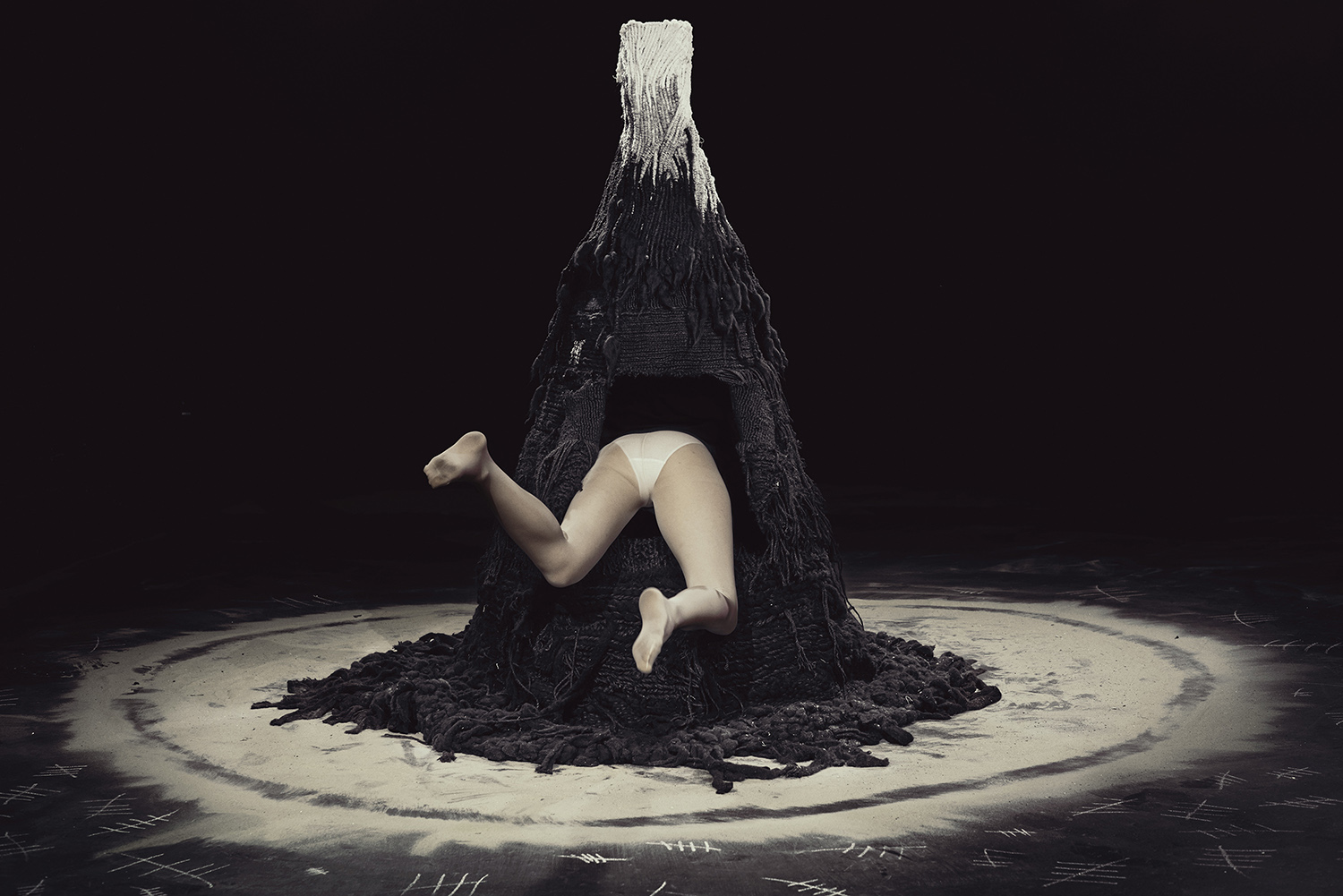



Add Comment